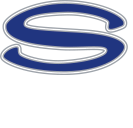Highly qualified, dedicated, caring teachers and staff members
Are you taking the classes you need to pass in order to graduate? Have you performed enough community service hours and presented your research project at least twice per year? Here’s what’s required:
Get the answers here!
No.
Yes, EDD will fulfill the project requirement. EDD is the Project Lead the Way, or PLTW, senior-level capstone course. It is a project-based course that is recommended to be taken after a student has successfully completed the PLTW sequence of courses:
- Intro to Engineering Design
- Principles of Engineering
- Digital Electronics or Environmental Sustainability
The answer to this question will be largely dependent on the total number of students who apply to participate each year. Ideally, there will be no more than 20 students per research group, with sub-team divisions of three to five students.
- Washington State Math Council annual competition
- Washington State University Imagine Tomorrow
- Watershed Council
- Youth Apps Challenge
Freshmen are welcome to participate in the research groups; however, it is not recommended.
This requires supervision and district-level approval (still pending).
Students are only required to participate in doing a research project for one year. While dropping is not ideal (the SMT Magnet faculty strongly recommends two years of participation), a student could drop the research course during junior year and reapply to participate during senior year. In dropping the research group, a student will risk receiving a no-credit designation on their transcript for the research group.
Yes. Students will be doing detailed research with similar requirements comparable to the International Science and Engineering fair.
Research will be conducted outside of the school day. Each research group will hold its own independent schedule that will be tailored to meet the needs of the students within that group. The SMT faculty is very aware of the many commitments our students have outside of the school day and will attempt to create meeting times that are flexible. Student will be responsible for communicating meeting times to parents.
Students are primarily responsible for informing parents about pertinent information regarding their project process. Information regarding application and participation will be posted in the 600 wing and available on the SMT calendar. Individual questions can be emailed.
Yes. Students are welcome to reapply to participate in a different research group when the application window opens for the following year’s project cycle. The project cycle reopens with an application process each May. There will be a process by which students can maintain their spot in a particular research group should they choose to continue to participate.
Preference will be given to upperclassmen. Seniors will have first priority, followed by juniors, sophomores and freshmen.
The research groups will be assembled by the SMT faculty based on information provided on the student application. It is the intent to place each student in their first selected project group. Unfortunately it is likely that not every student will get their first choice due to project group leveling.
Do student community service hours have to be done within the scope of science, math and technology?
No. Ideally, we would like students to relate their service experience to the various science, math and technological fields; however, we understand that not all students have avenues to those experiences.
Skyview’s SMT Magnet and iTech are significantly different. Skyview is a comprehensive high school with extensive academic and extracurricular offerings. The Science, Math and Technology magnet represents an opportunity for students to receive academic recognition (an SMT diploma) for their success in taking more science, tech, engineering and math—STEM—courses; competing in the a science fair; and being active participants in the STEM community. By contrast, iTech is a full-day high school wherein the goal is to implement project-based learning with a STEM vision across the broad spectrum of curricula.
The SMT Magnet faculty acknowledges that creating a four-year high school plan can be tricky. Thus it is highly recommended that students and parents take the time to map out a four-year plan that integrates the SMT credit requirements into state-level graduation requirements. The SMT-approved course list encompasses many courses that can fulfill both state and SMT graduation requirements. For example: Graphic design is recognized as an art credit at the state level, while also counting as an SMT technology credit. More information about state-level credit categories can be found in Skyview’s curriculum guide.
No. The SMT faculty wants students to maximize their academic potential. Thus, the faculty is seeking students who wish to maximize their opportunities and do more.
No and yes. While we respect the Running Start program and the positive learning that goes on at the Clark College campus, the SMT faculty has decided that it is important for students participating in the SMT magnet to remain a part of the physical community here at Skyview. Therefore, we require that SMT English 9, all science, all math and all technology credits be taken here at Skyview (see SMT graduation requirements). Students, therefore, may take courses outside of the fields of math, science and technology at Clark College. For example: Language credits earned at Clark College will count toward SMT graduation.
Exceptions do exist for students whose knowledge has progressed beyond that of the SMT course offerings. For example, if a student has previously taken Calculus II (BC) and wishes to continue with upper-level math at Clark College, those credits earned will count toward SMT graduation.
Invaluable support for the SMT Magnet
The SMT Boosters is a volunteer group comprised of parents; community members; and professionals working in industries related to science, technology, engineering and math. The Boosters support the SMT Magnet with research, Tech Days and SMT Blasts.
